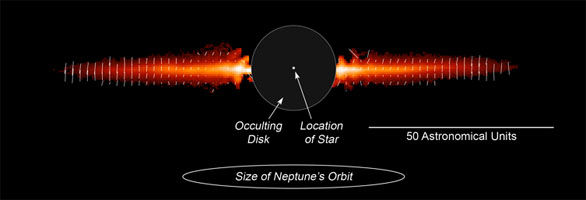
|
AU Mic Polarization: Blizzard Warning
|
|
After discovering the AU Mic debris disk in scattered light in 2004, I initiated several follow-up programs to understand the physical nature of grains around this nearby red dwarf. I attempted to obtain the optical polarization properties of the disk using HST's Advanced Camera for Surveys in an observing mode that hadn't been tried before (coronagraphic polarization). The experiment was very successful, and James Graham produced a detailed analysis of the results using sophisticated models of how grains of different sizes and compositions would polarize light. Our remarkable conclusion is that the grains seen in these images are extremely fluffy, like the snow that skiers call "champagne powder". Due to winds from the central star, this fluffy material is rapidly blown outward, hence the "blizzard warning" for AU Mic. The scientific insight is that fluffy grains cannot be created from the erosion of larger objects, because larger objects are denser. Thus the grains that we see around AU Mic have grown from much smaller particles, and what we are witnessing is how the smallest dust in the galaxy comes together to ultimately form the largest solid objects, planets. Click here for the full press release from Hubble, and here for the press release from UC Berkeley. |
